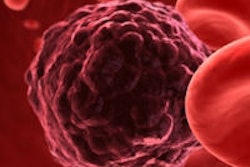A University of Michigan School of Dentistry study has discovered a biological mechanism that preserves the gastrointestinal tracts in mice who were delivered lethal doses of chemotherapy (Nature, July 31, 2013).
The findings could have significant impact on cancer treatment. If a patient's gastrointestinal tract remains healthy and functioning, the patient's chances of survival increase exponentially, according to Jian-Guo Geng, an associate professor at the dental school. Recently, Geng's lab discovered the mechanism. In theory, it could eventually cure later-stage metastasized cancer.
Geng's lab found that when certain proteins bind with a specific molecule on intestinal stem cells, it revs intestinal stem cells into overdrive for intestinal regeneration and repair. Stem cells naturally heal damaged organs and tissues, but so-called "normal" amounts of stem cells in the intestine simply cannot keep up with the wreckage left behind by the lethal doses of chemotherapy and radiation required to successfully treat late-stage tumors.
However, the phalanx of extra stem cells protect the intestine and gastrointestinal tract, which means the patient can ingest nutrients, the body can perform other critical functions, and the bacterial toxins in the intestine are prevented from entering the blood circulation, Geng said.
These factors could give the patient just enough of an extra edge to survive the stronger doses of chemotherapy and radiation, until the tumor or tumors are eradicated. In the study, 50% to 75% of the mice treated with the molecule survived otherwise lethal doses of chemotherapy. All of the mice that did not receive the molecule died, Geng said.
The next step is to aim for a 100% survival rate in mice that are injected with the molecules and receive lethal doses of chemotherapy and radiation, he added.
Geng's lab has worked with these molecules, called R-spondin1 and Slit2, for more than a decade. These molecules repair tissue in combination with intestinal stem cells residing in the adult intestine.


















